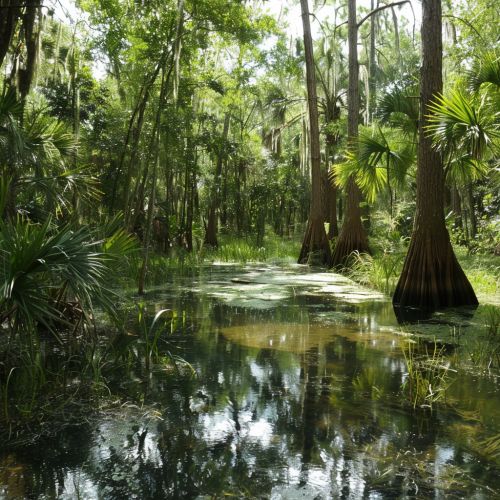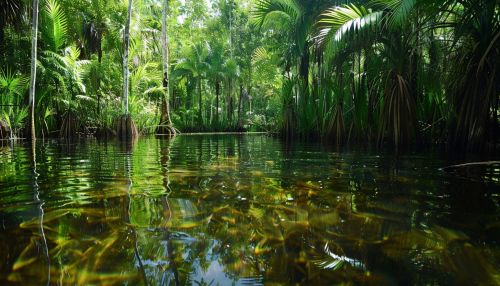Swamp
Overview
A swamp is a type of wetland that is dominated by woody plants and is saturated with water either permanently or seasonally. Swamps are found all over the world and play a critical role in maintaining the planet's biodiversity and ecological balance.
Classification
Swamps are classified into two broad categories: freshwater swamps and saltwater swamps. Freshwater swamps are typically found inland, while saltwater swamps are usually found along coastal areas where they are influenced by tides.
Freshwater Swamps


Freshwater swamps are often found in areas with poor drainage, where water accumulates and gives rise to a unique ecosystem. They are characterized by a high diversity of plant and animal species. The water in these swamps is usually stagnant and rich in minerals and organic matter, providing a fertile environment for the growth of a variety of aquatic plants.
Saltwater Swamps
Saltwater swamps, also known as mangrove swamps or tidal swamps, are found along tropical and subtropical coastlines. They are characterized by the presence of salt-tolerant mangrove trees and are influenced by the rise and fall of tides.
Ecology
Swamps are among the most productive ecosystems on earth, providing habitat for a wide variety of plant and animal species. They serve as breeding grounds for many species of birds, fish, and insects. Swamps also play a crucial role in nutrient cycling and water purification.
Flora
The plant life in a swamp depends largely on the type of swamp and its geographical location. Freshwater swamps are typically dominated by trees such as cypress, cedar, and pine, while saltwater swamps are characterized by the presence of mangrove trees.
Fauna
Swamps are home to a wide variety of animal species, including birds, mammals, reptiles, amphibians, and invertebrates. Some of the most common swamp-dwelling animals include alligators, turtles, snakes, beavers, and a wide variety of bird species.
Importance
Swamps provide numerous ecological, economic, and cultural benefits. They play a crucial role in water purification, flood control, and carbon sequestration. Swamps also provide habitat for a wide variety of species and serve as important sites for scientific research and education.
Threats and Conservation
Swamps around the world are under threat due to human activities such as deforestation, pollution, and climate change. Conservation efforts are crucial to protect these unique and valuable ecosystems.
